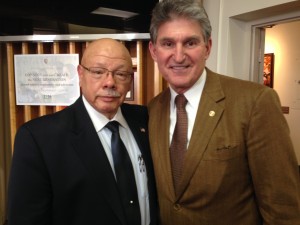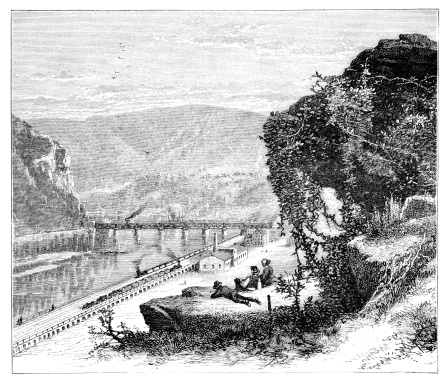
By James Green, Jr.
Manager, Intelligence and National Security Relationships at American Military University
This past Friday, I had the honor and great privilege to serve as the emcee for a special recognition program. Sen. Joe Manchin III, the West Virginia Congressman from the United States Senate, presented a special proclamation on Storer College, a historic educational establishment that left a significant imprint on the history of West Virginia and our nation. Located in the state’s eastern panhandle in beautiful Harpers Ferry, the legacy of Storer College began following the Civil War. It was established by the Reverend Dr. Nathan Cook Brackett and philanthropist John Storer of Sanford, Maine whose goals were to create a school that was open and accepting of all students, regardless of gender, race, or religion.
During Black History Month, it is fitting to recognize such an important endeavor as Storer College because it had such a significant impact on civil rights in the decades following the Civil War. This educational institution was a constant refuge for former slaves who found themselves without the necessary skillsets to lead marketable lives. Attendees were taught how to read and write, but they also gained a sense of purpose. John Brown’s raid is largely considered the motivation for the school’s creation in Jefferson County, as the 1859 rebellion liberated countless African Americans in the area. Frederick Douglass, also a trustee of Storer College, once spoke at the school about John Brown and the raid’s significance.
On October 2, 1867, “Storer Normal School” opened its doors with two teachers and 19 attending students. Under the leadership of Henry T. McDonald, Storer converted into a college in 1938. Storer College set the groundwork for integrated education across the rest of the nation. For many years, it was the only school that allowed African Americans to acquire an education past elementary school. By the end of the 19th century, our nation faced another battle marked with Jim Crow laws and legal segregation. To combat these injustices, many brilliant leaders in the African American community created the Niagara Movement, a precursor to the NAACP. The second meeting of the Niagara Movement was held at Storer College in 1906. It was supported by such leaders as W.E.B. Du Bois, William Monroe Trotter, and Booker T. Washington.
In 1954, legal segregation came to an end with the Supreme Court’s decision in Brown v. the Board of Education. This decision, while revolutionary across the nation, also brought an end to federal and state funding for Storer College, and regrettably, its doors closed a year later. Today, though no longer a learning institution, the National Park Service continues the college’s mission to welcome individuals of all backgrounds by using the campus as a training facility. It continues to serve as a staunch reminder of triumph over injustice. As we reflect on Storer’s history, it’s important that we continue to pass down this legacy for future generations because it remains relevant in so many ways to this day.
Storer College will always have a special place in my heart. It was where my parents met and received their formal education. My aunt was also among the thousands of African Americans who attended this great institution. In fact, many of my elementary school teachers also were Storer graduates. Today, I work to keep the school’s history alive as a member of the Storer College National Alumni Association. It only seems fitting that I would follow their footsteps along the education path, and work with American Military University, another outstanding academic institution, whose mission is to provide an affordable, high quality education to all students.
About the Author
James Green, Jr., is the AMU Manager for Intelligence & National Security Relationships and Partnerships. He spent nearly four decades working in the Intelligence Community and the Department of Defense. James is a member of the Association of Former Intelligence Officers, the Foreign Area Officers Association, the National Military Intelligence Association, the Intelligence and National Security Alliance, the International Association for Intelligence Education and the Armed Forces Communications and Electronics Association. He is also a member of the Jefferson County Black History Preservation Society.

Comments are closed.